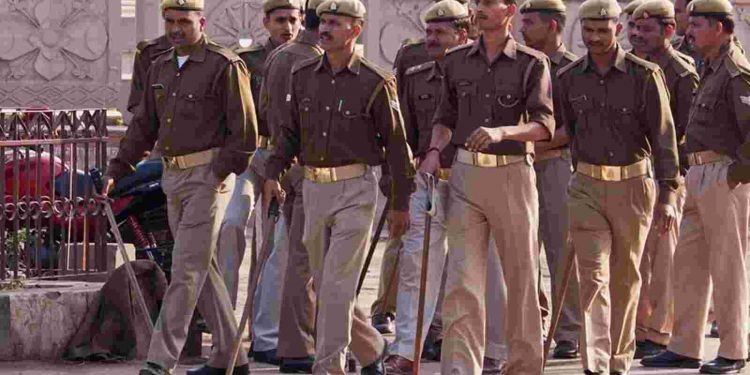Pinak Mishra, IPS
Recently, while interacting with IPS probationers at the Sardar Vallabh Bhai Patel National Police Academy, Prime Minister Narendra Modi lamented over the negative image of the police and exhorted the young officers about to enter the force to work assiduously on changing that perception.
The Prime Minister was neither the first head of government to have expressed his displeasure and concern over the flagging public confidence on the police, nor was the issue pointed out for the first time. The dwindling confidence of the public towards the police force has been discussed ad nauseam and volumes have also been written about the people’s lack of trust in the police.
However, given that ignominy still persists and the public perception of police in India still remains clouded, it is pertinent to discuss the issue and more importantly search for workable solutions.
Police is an important and integral part of the state machinery and is the fulcrum through which the State enforces law and maintains order. Therefore, managing trust is important for the police as it is the foremost institution that sets the criminal justice system in motion. It goes without saying that the sacrifice the police force makes in maintaining law and order, fighting crime, terrorism and violence and responding to disasters and pandemic is immense.
However, it is indeed unfortunate that the mention of police today evokes images of corruption, abuse of power, human rights violations, collusion with criminals, acting under influence, and an overall unprofessionalism lined with insensitivity towards the common citizens they are meant to serve.
As we discuss the issue of public trust and confidence vis-à-vis police, few pertinent questions arise. Why is the image of the police clouded with distrust, suspicion and fear and what for doesn’t it change despite significant interventions and reforms? Are the police personnel singularly responsible for all that is wrong with the institution as a whole? What can be done to change the work culture of the police to build confidence and create an environment of mutual coordination with the public? Is there a way out of this quagmire of disbelief and cynicism?
The answer to these questions has been dealt seriously both by independent police researchers and other institutions such as courts, civil society and by successive governments as well as by police leaders leading the force. While the former have unequivocally bemoaned the multiple prejudices that have plagued the police and have attributed this to the colonial legacy of the present police system, the later have flagged the issues of the harsh and challenging working conditions, long working hours, non-existent social life, hostile environment and lack of public empathy and support, as the reasons affecting the behaviour and work culture of the force.
Be that as it may, one may wonder if the situation will ever actually change, or are the police ordained to wear the badge of distrust and disparagement forever? Are citizens doomed to accept the contemporary police as fait accompli or deserve a sensitised, modern and a people’s police? The answer to these questions perhaps lies in “technology”.
As we know, policing demands interaction of police officers and personnel with the public. It is during these interactions that a common man often complains of experiencing a rude, insensitive and uncouth police force. Intimidating interaction, unfriendly gestures, denial and delay in redressing the grievances, perfunctory investigation, and corruption in providing services, use of brute and violent methods makes the experience of a citizen with the police harrowing and tormenting.
It is in this backdrop that technology has the potential to be a game changer. Sensitive policing can be fostered by leveraging technology to both reduce the burden of work on police personnel, while automating administrative and other day-to-day tasks, thereby minimising police interaction with citizens for these routine procedures and maximising the potential of the workforce.
For example, a simple facility of e-FIR now available in many police jurisdictions in the country is a pioneering example of technology coming to the aid of police personnel as well as citizens. It has reduced the discretion of the police in not registering cases and bringing transparency in the process.
Using technology to mediate traffic maintenance and including automated tickets for traffic violation have proved useful in eliminating petty corruption and harassment of citizens by police.
The use of body cameras used by police personnel on the ground dealing with law and order and other enforcement activities have proved as an effective check in the use of disproportionate force.
The use of DNA technology in investigation of sensational crime has the potential of enhancing the credibility of the police investigation. Other emerging fields such as artificial intelligence and innovative use of social media have been playing a significant role in bridging the communication gap between police and the public.
Technological innovations have been changing the police landscape rapidly. It’s a new world out there, and it continues to throw up challenges and opportunities that are markedly different from what we have been used to. India of the 21st century needs a modern, adaptive police force that reflects not the fears and apprehensions of people, but their hopes and aspirations. Therefore, an educated and professionally trained police force that knows how to leverage technology for effective policing is essential in order to meet the challenges and opportunities as well as to uphold the trust of the people.
The writer is an IPS officer currently serving at the Sardar Vallabhbhai Patel National Police Academy, Hyderabad.






































